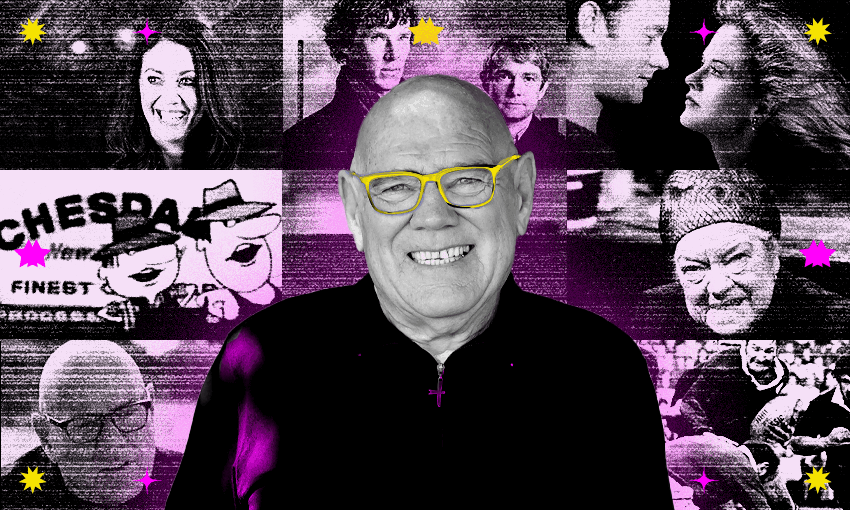New Zealand, your annual search results have been compiled – and they’re pretty weird.
It has, by any imaginable measure, been a strange old year. It started with the threat of lockdowns, and it’s ending with rising Covid case numbers. Along the way, the Queen died, Johnny Depp inexplicably thrived, Will Smith slapped someone, and Ruby Tui became a total star. Apparently, Wellingtonians did a lot of pottery. Oh, we also got our first truly terrible Taika Waititi movie.
All of this – all of it – plays out in stark, bruising reality in the latest Google trends results. Released this morning, the year’s annual stocktake of our wants and needs takes everything every New Zealander plugged into the world’s largest search platform over the past 12 months and feeds it back to us like a digital human centipede.
What does this say about us? What does it reveal about our lives, hopes, desires, our inner monologues, and our basest inner thoughts? Most importantly, though, why are we so desperate to make so much guacamole?
Let’s unpack a few of the highlights…
‘Wordle’
Our phones are capable of streaming mind-blowing video games full of 4K video and photo-realistic graphics, yet the game we chose to pass the time with the most this year was a humble five-letter word puzzle. This is how we clear our minds of the looming threat of climate change, war, and the impending return of Donald Trump – become addicted to Wordle.
‘How to spell askew Google joke’
I’m really sorry, but you’ll need to Google this one.
‘Australian Open’
The All Blacks had a must-see trainwreck of a season. The Commonwealth Games happened. The football World Cup is on right now. The Black Ferns won the Rugby World Cup. Ruby Tui is a star. Yet the sporting term we searched for the most is “Australian Open”? Huh.
‘Queen Elizabeth’
Understandable. The deaths of Shane Warne, Taylor Hawkins, Betty White, Bob Saget and Technoblade were hardly going to trump the demise of the Queen. I mean, she’s on our bank notes. Cue the in memoriam music. And RIP, everyone.
‘Johnny Depp’
To be fair, the most-searched list of global figures is almost entirely full of villains: Elon Musk, Novak Djokovic, Anna Delvey and King Charles all made the top 10. Amber Heard came in second, if that’s any consolation.
‘Clarke Gayford’
People must have really loved Moving Houses.
‘Thor: Love and Thunder’
Seeing this was like watching my 12-year-old son play video games for more than two hours. Is the absolute CGI shiteness of Taika Waititi’s Thor sequel why we kept Googling it? (Sorry Taika.) Other films we Googled a lot: Black Adam, GI Jane, Top Gun, Jurassic World: Dominion.
‘Guacamole’
The list of savoury foods we keep Googling is like a potluck gone wrong. “Macaroni cheese” is next to “focaccia” , “corn fritter” is atop “gnocchi”, “tomato relish” is beside “spaghetti bolognese”. But guacamole is our number one. Watch out next year for the versatile dip to replace “avocado on toast” as the thing everybody blames for millennials being unable to buy their first home.
‘Cinnamon rolls’
A proper cinnamon roll, left to prove overnight, folded and rolled in date paste, baked to chewy perfection, smothered in sticky vanilla icing then eating straight out of the pan is a thing of pure, untouchable beauty. This, in my opinion, cannot be Googled too much. Full applause for this one.
‘How to be single’
Apparently, two years of Covid-enforced lockdowns has many of us questioning our relationship status. Understandable. Less so are the other ‘How to’ things we Googled this year: ‘How to tie a tie,’ ‘How to screenshot on Windows,’ ‘How to play Wordle’ and, ‘How to make self-raising flour’. To be fair, I’ve Googled that last one myself.
‘Pottery classes Wellington’
Everyone in the Windy City is apparently getting their Ghost on. Are you all OK?
‘Pottery classes Auckland’
There’s a theme beginning to emerge here.
‘Elden Ring classes’
What.
‘Euphoria’
New Zealand’s number one most-Googled TV show is the second season of a glossy HBO teenage dramedy full of drugs, sex and parties culminating in an absolutely excruciating high school production about all those drugs, sex and parties. Loved it. When’s season three landing? (Google it.)
‘Wordle’ (again)
This is it, the thing we Googled the most, the chart-topper that beat out ‘Quordle,’ ‘Queen Elizabeth’ and even the ‘Australian Open’ for the top spot. Disappointing, New Zealand. Perhaps we should take a long, hard, collective look at ourselves, but we’re all too busy playing Wordle (then Googling it).
Our top 10 most Googled things…
- Wordle
- Locations of interest
- Australian Open
- Covid cases today
- All Blacks vs Ireland
- Ukraine
- World Cup
- Quordle
- Matariki
- Queen Elizabeth



